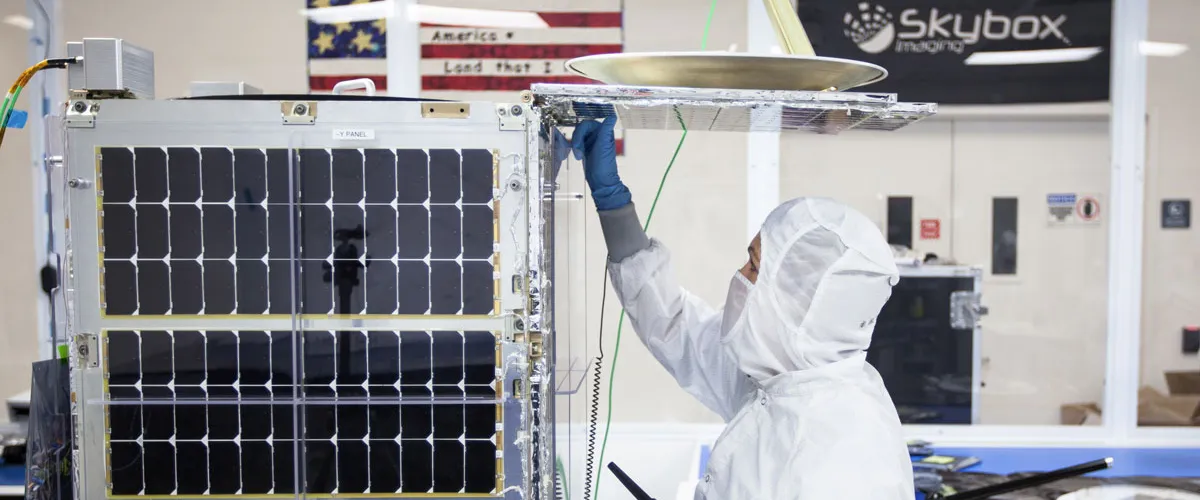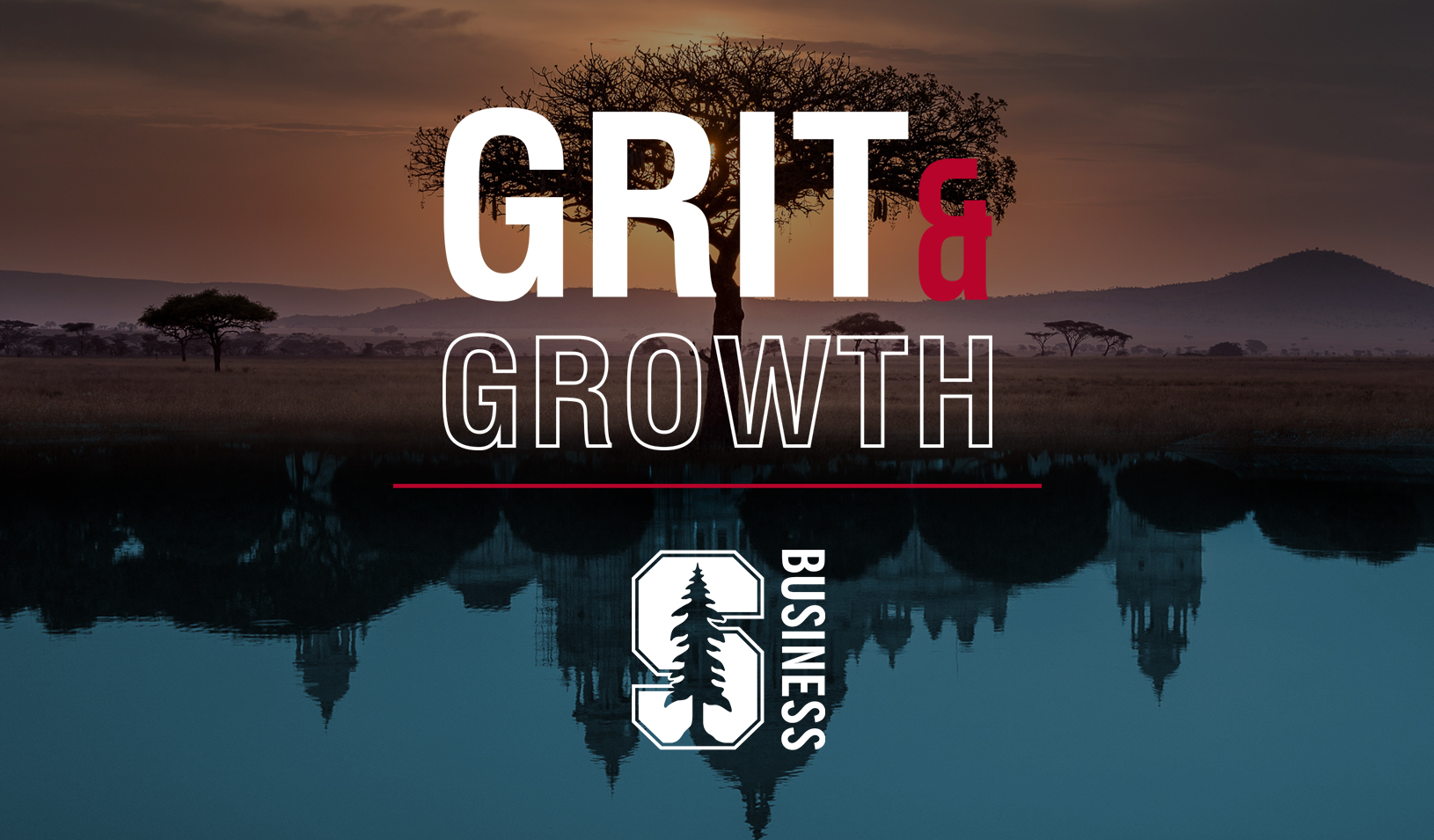John Fenwick: “Look for Industries That Are Ripe for Disruption”
A cofounder of Skybox Imaging discusses satellites, data, and advice to the budding entrepreneur.
November 18, 2013

John Fenwick, a U.S. Air Force veteran and self-described space geek is a cofounder and vice president of Skybox Imaging. The Mountain View, Calif., startup plans to launch a fleet of micro-satellites that will take high-resolution photos of the earth and sell that data to industries and government. Skybox’s secret sauce: Its satellites — about the size of a hotel room refrigerator — are significantly less expensive to build and launch than conventional imaging spacecraft. As the man in charge of flight operations, Fenwick says, “I’ll have my hand on the joystick when the satellites are in orbit.” Fenwick earned his MBA from Stanford Graduate School of Business in 2009.

John Fenwick, MBA ‘09 (Photo courtesy of Skybox Imaging)
What was the inspiration behind Skybox Imaging?
My cofounders, Dan Berkenstock and Julian Mann, were aerospace graduate students at Stanford developing interesting technology in satellite miniaturization. In thinking about practical applications for their work, it occurred to them that small satellites could be used to monitor companies that were buying carbon offsets and see if they were doing what they had agreed to do. Since I have a background in remote sensing from aircraft and satellites from my time in the Air Force, they asked me if it were possible. I said not only is it possible, but I can think of a lot of other uses that would be very interesting if we could produce large numbers of spacecraft producing good enough pictures at high volume and high frequency.
That’s quite a leap from rainforests to imaging satellites.
Well, yes and no. Ultimately, the real value we deliver is saving the trouble of having to send someone to physically check up on something. There are many ways to provide access to places in the middle of nowhere. But it turns out that satellites are a pretty efficient way to do it, whether you are an oil and gas company that wants to monitor a potentially leaky pipeline, a telecommunications company that wants to look at your towers that are very far afield, or an agency that wants to monitor factory emissions.
Will you be selling pictures taken from space or data derived from those pictures?
Both. Our value proposition changes as we add satellites. With our first satellite we will have a comparatively limited volume of data and a limited amount of time [over a given place on earth]. The satellites are in a polar orbit, so at most latitudes a satellite will come overhead every couple of days. With a couple of dozen satellites, we’ll be overhead once every couple of hours. That means you can do analysis you couldn’t when you were only coming over every few days. The more data you have, the more complex it is to analyze. Some of our customers will do it for themselves; we’ll do it for others.
How might a customer use that data?
Commodities are moved around in containers, on ships, and on trucks. We’ll be able to keep tabs on those across the world on a daily basis. We can also track the movement of consumers. Being able to see how many cars are parked outside Lowe’s vs. Home Depot is really important for a trader, because even a 10% difference between the 2 has a huge impact. We can monitor the health of crops by analyzing their reflectance in different color bands. That can be done today, but not as frequently as we’ll be able to do it. Additionally, most of the oil in Asia is stored above ground in tanks with floating roofs. A satellite can see if each roof has moved up or down, providing commodities traders insight into the oil supply.
Doesn’t this raise a serious question of privacy?
Our cameras don’t have a resolution below the size of a vehicle. So we can’t see people unless there’s a big crowd. And we can’t read your license plate or look in your window.
Are there other precautions?
Every satellite has to be licensed through a number of U.S. regulatory agencies, including the Pentagon. They provide a preapproved list of customers we can and can’t sell to.
You’ve said that much of your technology is “off the shelf.” What does that mean, and is there a lesson in that for other entrepreneurs?
The macro lesson is this: Look for industries that are ripe for disruption. See where barriers to entry, in terms of cost, are lowered because there are parallel technology elements you can bring to bear. A key for us is the development by the auto industry of low-cost electronics that are survivable in extreme temperature environments. Your car has to work in both Minneapolis and Death Valley. That’s not as great a range as you might think; it’s negative 40 to positive 40 Celsius. Turns out that’s the same operating temperature range as our spacecraft. Additionally, all of the guts of our satellite are connected in the exact same way electronic components in a car talk to each other.
Your satellites will be in a relatively low orbit, about 400 miles. That means they will burn up sooner, doesn’t it?
They’ll have a lifespan of four-plus years. But actually, that’s an advantage. Because they’re such low cost, we’ll be able to replace them much more frequently. And that means we’ll always have the newest technology up there. Conventional satellites stay up 10 years or more and take comparatively twice as long to build. So they’re obsolete almost as soon as they’re launched.
What happens when each of your satellites reaches the end of its life?
Our satellites are so small, and fly low enough, that soon after they take their last picture, they’ll burn up completely upon re-entry into the earth’s atmosphere. If you are watching from the right spot, they should make for quite a pretty shooting star.
What is your advice to a budding entrepreneur?
At every step there was a lot of uncertainty. Does this make any sense; will anyone ever fund us; is this crazy? That voice was always there in the back of our heads, and we just ignored it and pushed forward. We told ourselves that we’ll keep trying this until everyone we run across says no. We ended up pitching over 40 venture capital firms before someone said yes. The lesson is to follow through on your ideas, however outlandish they might first seem.
Is there a business book that influenced you?
Silicon Sky: How One Small Startup Went Over the Top to Beat the Big Boys Into Satellite Heaven. Like us, Dave Thompson [the protagonist] had a crazy space business idea in business school, and [realized] his vision via a lot of hard work and chutzpah. Lots of parallels to Skybox. We now give the book out to every new employee as required reading.
Any others?
Crossing the Chasm: Marketing and Selling Disruptive Products to Mainstream Customers, by Geoffrey A. Moore and Regis McKenna. For us, the challenge is moving someone from saying “Yes, this is interesting” to “Yes, I’ll spend money on it.” This addresses that issue.
For media inquiries, visit the Newsroom.
Explore More

Expanding Globally: A Masterclass with Steve Ciesinski

From Local Startup to Pan-African Success: The Beem Story



